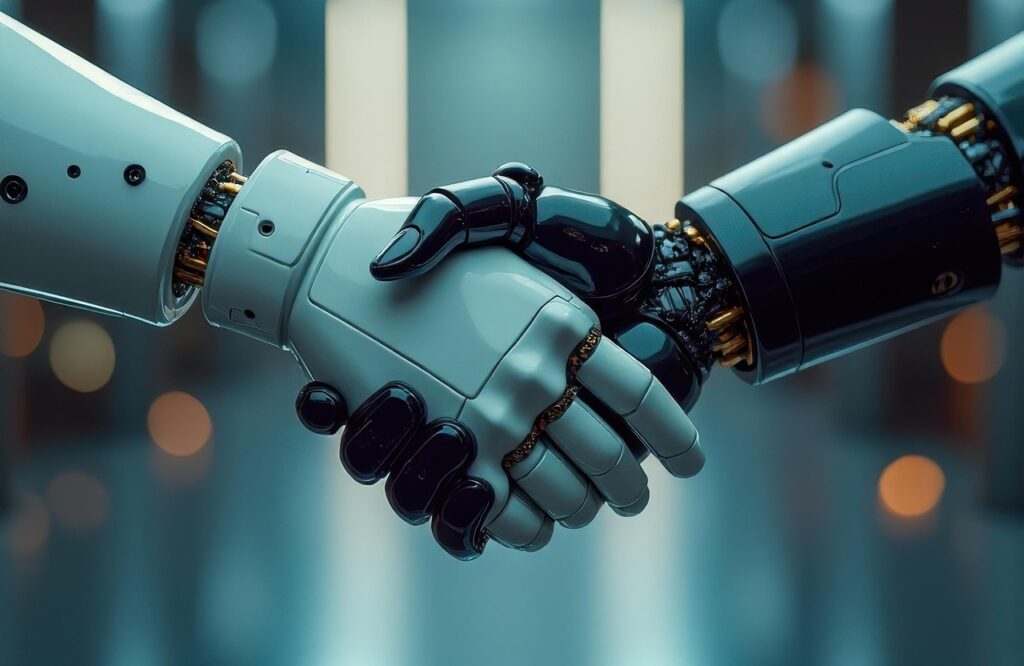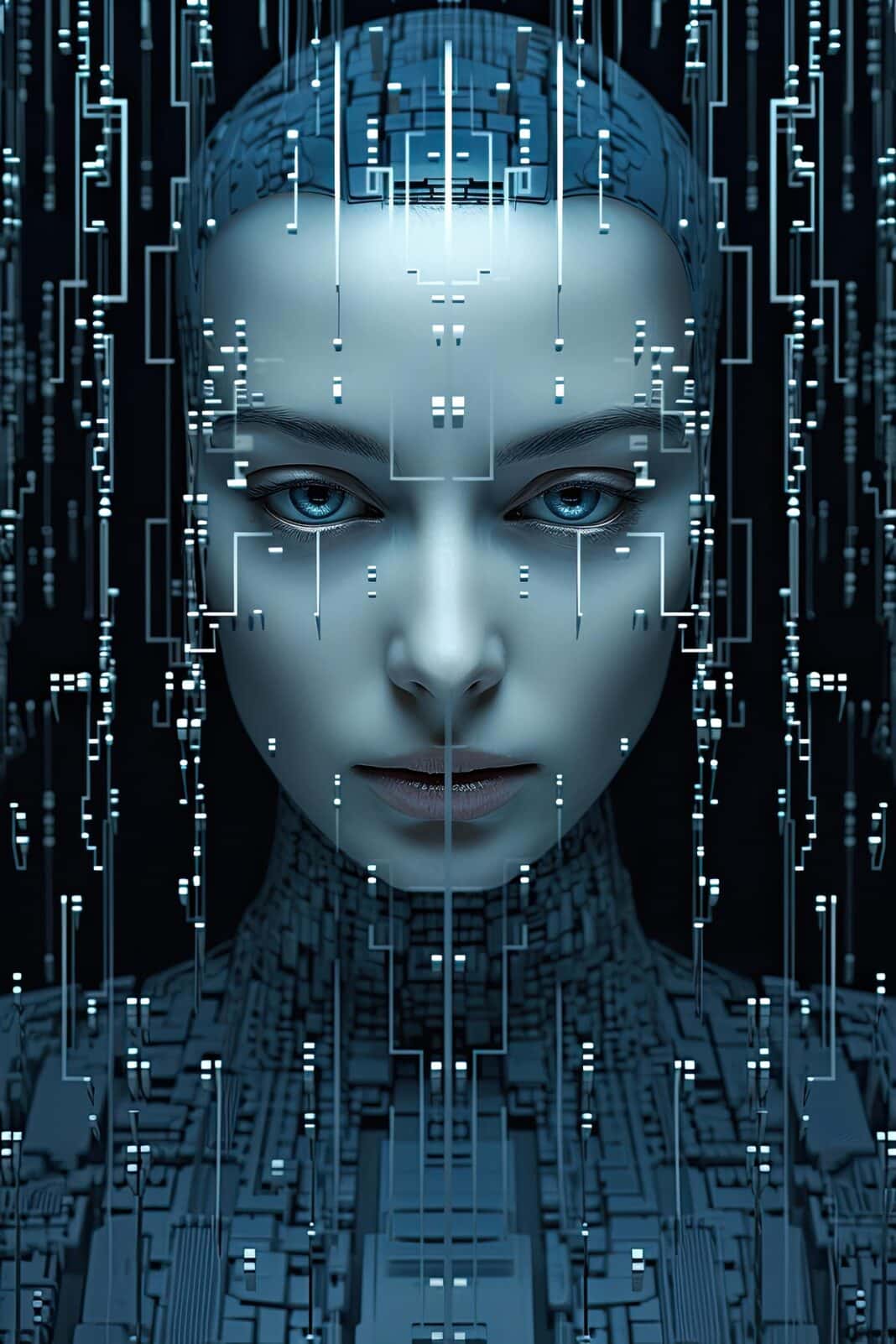The History of AI and Understanding the AI Revolution
Understanding the AI revolution has rapidly transformed from a sci-fi dream into a driving force of modern technology. In just a few decades, AI has gone from rudimentary experiments in labs to powering everyday tools like smartphones and smart home devices. This article explores understanding the AI revolution – looking at its origins, its present impact, and the road that lies ahead – to understand how we arrived at today’s AI-driven world and where we might be going next. By truly understanding the AI revolution, we can better grasp how this technology is shaping society and industry.
From Concept to Reality: A Brief History of AI
The idea of intelligent machines is central to understanding the AI revolution, dating back to the mid-20th century. In 1956, a group of scientists at the Dartmouth Conference coined the term “artificial intelligence,” marking the field’s official birth. Early AI research in the 1960s and 1970s produced programs that could solve math problems and play simple games, but progress soon hit obstacles. Limited computing power and overly optimistic expectations led to an “AI winter” in the 1970s and 1980s, when funding and interest in AI research dried up. Yet, AI quietly advanced: expert systems in the 1980s were used in industries to mimic human decision-making, and by the late 1990s AI had some headline-grabbing victories – notably IBM’s Deep Blue computer defeating world chess champion Garry Kasparov in 1997. These milestones proved that machines could mimic certain aspects of human intelligence, rekindling interest in the field.
Fast forward to the 2010s, and AI breakthroughs accelerated. The rise of machine learning – especially a technique called deep learning – enabled computers to learn from vast amounts of data. In 2012, a deep learning system dramatically improved image recognition accuracy, kick-starting a new AI boom. Tech giants invested heavily in AI, leading to innovations like voice assistants (Apple’s Siri debuted in 2011) and advances in language translation. By the late 2010s, AI was no longer a niche academic pursuit; it had become a global competition, with countries and companies racing to develop more powerful algorithms.
“History shows AI progresses in waves — breakthroughs, hype, slowdowns — and each wave leaves lasting capabilities behind.”
These milestones paved the way toward understanding the AI revolution as a turning point in technology.

AI in Our Daily Lives Today
Today, AI is all around us, often in unseen ways. Smartphone apps use AI to recommend music and route us through traffic. Streaming services suggest movies we might like based on our viewing history. In healthcare, AI helps doctors detect diseases like cancer early by analyzing medical images with superhuman accuracy. In finance, algorithms perform high-speed trading and detect fraud by spotting unusual patterns. Everyday tasks such as email spam filtering, voice-to-text dictation, and unlocking phones with facial recognition all rely on AI. These examples show how understanding the AI revolution reveals its integration into daily life, making tasks more efficient and personalized.
One of the most visible breakthroughs in understanding the AI revolution has been natural language processing, enabling AI to understand and generate human-like language. AI-powered chatbots and virtual assistants can carry on conversations, answer questions, and control our smart devices with just a spoken command. The release of powerful language models and chatbots (for example, those that can draft essays or answer complex questions) has demonstrated AI’s growing sophistication. Industries are also embracing automation: factories deploy intelligent robots to assemble products, and self-driving car prototypes use AI to navigate roads autonomously. AI’s presence in daily life is often behind the scenes, but its impact is increasingly tangible – making services faster, cheaper, and sometimes even more accessible.
Quick take: Recommendation systems, computer vision in healthcare, NLP assistants, and anomaly detection in finance are the most common “invisible” AI you meet every day.
When understanding the AI revolution, it becomes clear how everyday life is being reshaped through automation and intelligent systems
The Road Ahead: Future Trends and Challenges
As impressive as AI is today, we are likely only scratching the surface of its potential. In the near future, AI innovation is expected to continue at breakneck speed. Researchers are working on artificial general intelligence (AGI) – AI that can understand or learn any task a human can – though achieving this human-level intelligence remains a distant goal. More immediately, AI will become more prevalent in sectors like education (personalized learning tutors), agriculture (smart farming with AI predicting weather and crop needs), and transportation (improved autonomous vehicles and smart traffic systems). The Internet of Things (IoT) combined with AI could lead to truly “smart” cities, where infrastructure like energy grids and public transport systems adjust in real-time based on AI predictions to reduce waste and improve efficiency. As we look forward, understanding the AI revolution becomes essential for policymakers and innovators to prepare for both opportunities and risks.
However, this AI-driven future isn’t without challenges. One major concern is ethics and accountability: AI systems can unintentionally perpetuate biases found in their training data, leading to unfair outcomes in areas like hiring or lending. Ensuring AI is fair, transparent, and respects privacy is a top priority for researchers and policymakers. Governments around the world are beginning to draft regulations to guide AI development – for example, by setting rules on facial recognition use or requiring explanations for important automated decisions. Another challenge is the impact on jobs and skills: as AI automates routine tasks, many traditional jobs may change or even disappear. This means society will need to invest in education and retraining so that the workforce can transition into new roles that emerge in an AI-powered economy. Governments and researchers agree that understanding the AI revolution is essential to creating fair and transparent systems.
Understanding the AI revolution shows it holds immense promise, from curing diseases to combating climate change with smarter resource management. Yet it also raises profound questions about how we want to integrate intelligent machines into our lives. Collaboration between humans and AI will likely define the next era – we will rely on AI to handle complex analysis and data-heavy tasks, while human creativity, empathy, and judgment remain crucial in guiding how AI is applied. In essence, the story of AI is still being written. We stand at a point where understanding and carefully steering this technology will determine whether it benefits all of humanity. By learning from the past and planning responsibly for the future, we can ensure that the AI revolution continues to be a positive force in our lives for decades to come.
“The story of AI is still being written — our choices now decide whether the technology benefits everyone.”
By learning from the past, and by understanding the AI revolution in depth, we can guide its future to ensure benefits for all humanity.
Quick Templates (Copy-Paste)
1) Research Summary PromptSummarize recent developments in {AI subfield} in 5 bullets with dates and links. Then provide a 120-word layperson takeaway.
2) Ethics Checklist PromptFor an AI system in {domain}, outline a concise ethics checklist: data sourcing, consent, privacy, bias testing, monitoring, redress, and human-in-the-loop.
3) Policy Scan PromptList current regulations or standards relevant to {AI use case} (region: {US/EU/Global}) with one-line implications for builders and users.
Mini-FAQ
When did AI begin?
The field’s official birth is commonly traced to 1956 and the Dartmouth Conference, where “artificial intelligence” was coined.
How is AI used in daily life?
Recommendations, navigation, medical imaging support, fraud detection, voice assistants, spam filtering, and face unlock — mostly working behind the scenes.
What is AGI?
Artificial General Intelligence — a hypothetical AI that can understand or learn any intellectual task a human can. It remains a long-term research goal.
What are the main risks of AI?
Bias and unfair outcomes, privacy concerns, lack of transparency, and labor market disruption. Governance, testing, and oversight are key mitigations.
What’s next for AI?
By understanding the AI revolution, we can expect deeper use in education, agriculture, transportation, and smart cities; more robust safety practices; and clearer regulation and standards.
Further Reading
- Stanford University — AI Index
- OECD — AI Policy Observatory
- NIST — AI Risk Management Framework
- European Commission — Artificial Intelligence Policy
- MIT Technology Review — AI
